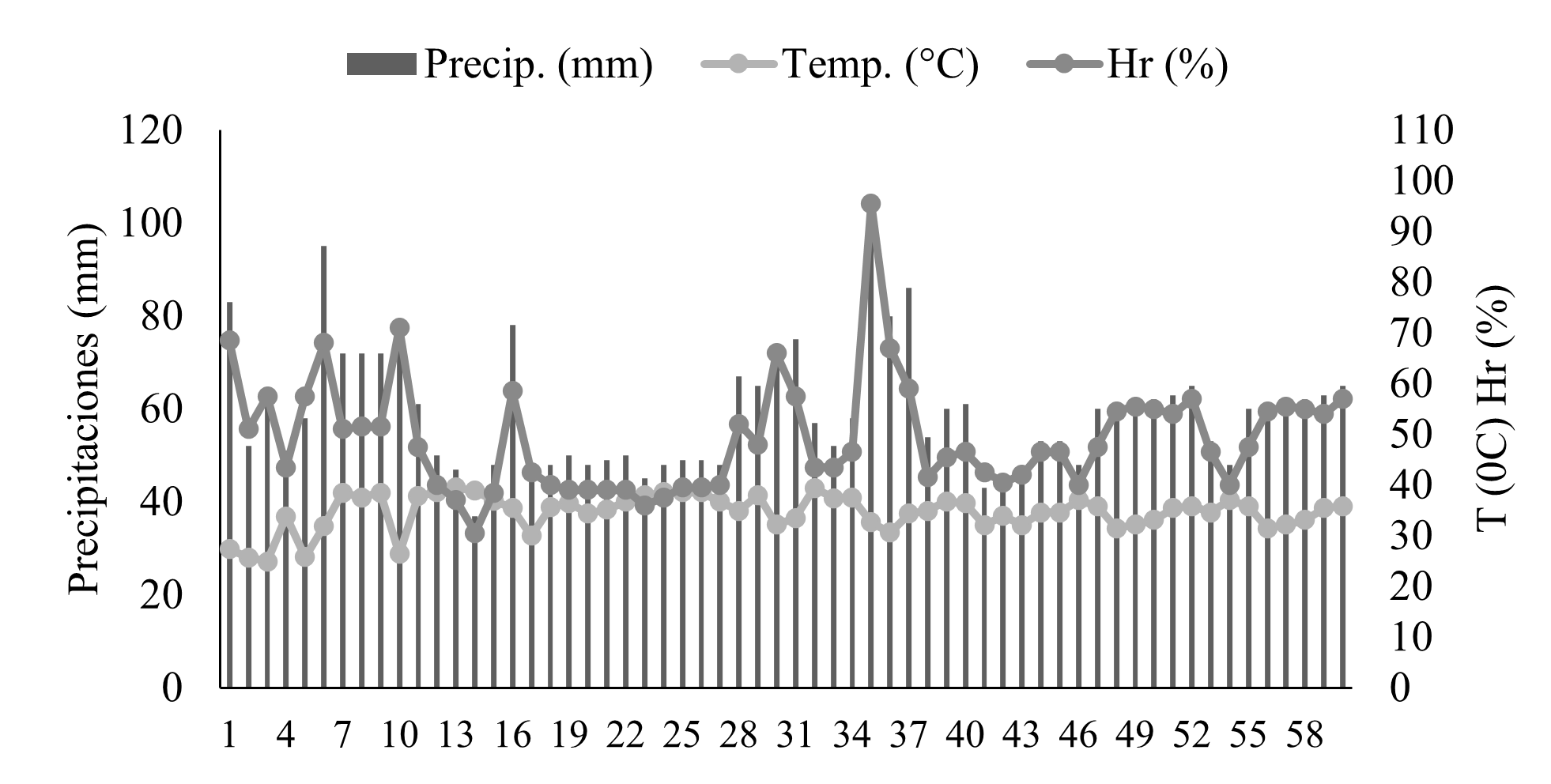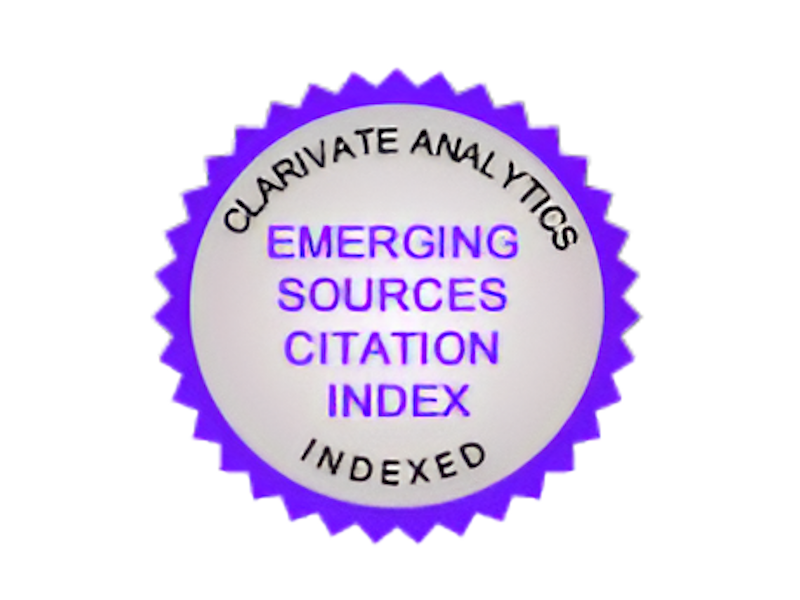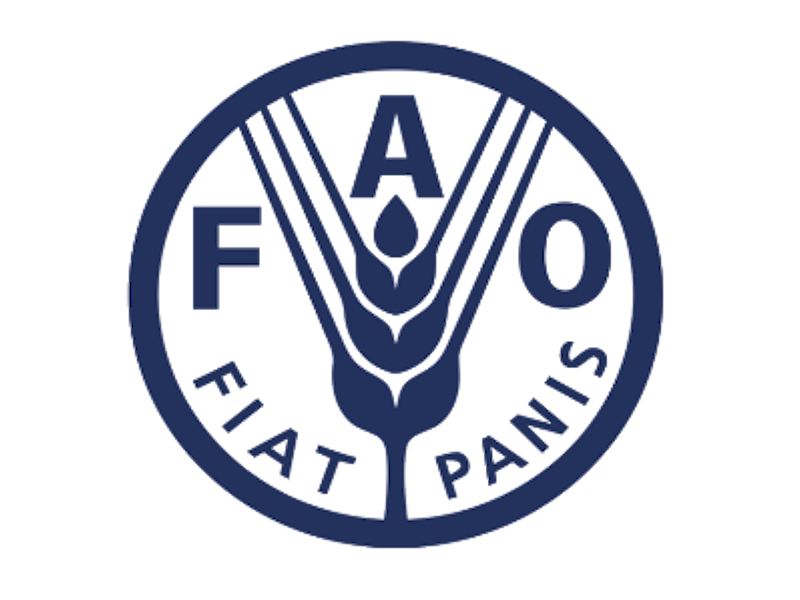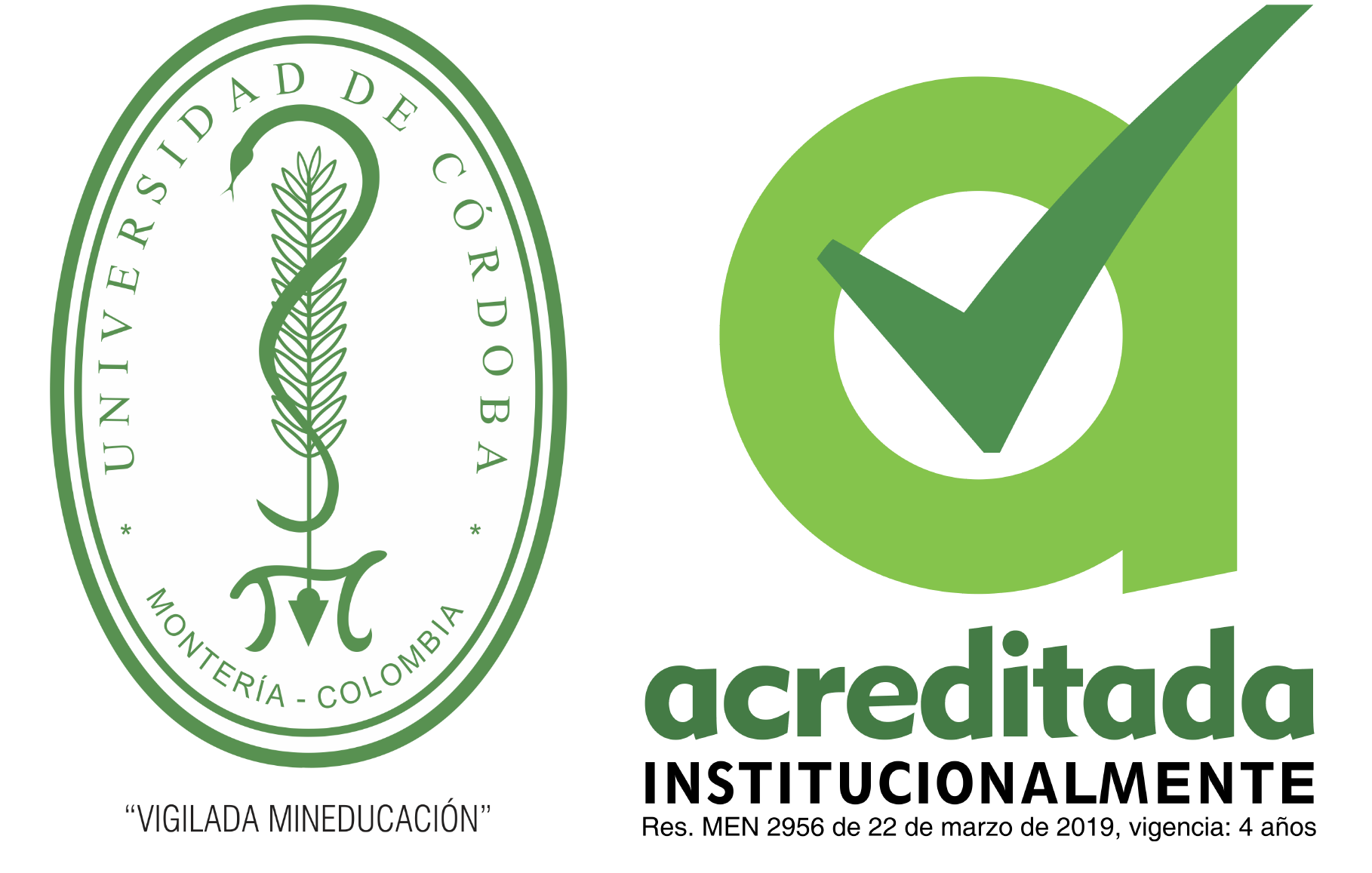Respuestas fisiológicas y productivas de plantas de remolacha tratadas con una solución de aminoácidos
Physiological and productive responses of sugar beet plants treated with amino acid solution

Esta obra está bajo una licencia internacional Creative Commons Atribución-NoComercial 4.0.
Mostrar biografía de los autores
El crecimiento exponencial de la población mundial hace necesario buscar alternativas para incrementar la producción de alimentos. Los aminoácidos se utilizan ampliamente para mejorar la productividad de los cultivos, sin embargo, en el cultivo de la remolacha roja no está generalizado su uso. Por lo que el objetivo de la investigación fue evaluar el efecto de la aplicación foliar de una solución de aminoácidos en los índices fisiológicos y la producción de la remolacha roja. Se diseñó un experimento en bloques al azar con cinco tratamientos y seis réplicas. Fueron evaluadas cuatro concentraciones de la solución de aminoácidos VA1 (0,3 ml L-1), VA2(0,6 ml L-1), VA3(0,9 ml L-1), VA4(1,2 ml L-1) y un tratamiento control VA0 (0). Se evaluó la biomasa seca de las plantas, área foliar, tasas de crecimiento, contenido de clorofilas totales, temperatura de las hojas, contenido relativo de agua y el rendimiento agrícola. Los resultados mostraron menor crecimiento y producción cuando no se usó la solución de aminoácidos y un incremento significativo de la biomasa seca de las plantas cuando se usó la solución en todas sus variantes. Las tasas de crecimiento, el contenido de clorofilas, así como la temperatura de las hojas, también fueron beneficiadas por los aminoácidos. La mayor eficiencia productiva se obtuvo con 0,6; 0,9 y 1,2 ml L-1 y la mejor respuesta en el rendimiento fue de la dosis 1,2 ml L-1. Por lo que la aplicación foliar de aminoácidos es una alternativa para incrementar el crecimiento y la producción de remolacha roja.
Visitas del artículo 192 | Visitas PDF
Descargas
- Alfosea-Simón, M., Simón-Grao, S., Zavala-Gonzalez, E. A., Cámara-Zapata, J. M., Simón, I., Martínez-Nicolás, J. J., Lidón, V. y García-Sánchez, F. 2021. Physiological, Nutritional and Metabolomic Responses of Tomato Plants After the Foliar Application of Amino Acids Aspartic Acid, Glutamic Acid and Alanine. Frontiers in Plant Science, 11: 1-16. https://doi.org/10.3389/fpls.2020.581234
- Barrs, H. y Weatherley, P. 1962. A Re-Examination of the Relative Turgidity Technique for Estimating Water Deficits in Leaves. Australian Journal of Biological Sciences 15(3):413. https://doi.org/10.1071/bi9620413
- Biosci, I. J., Ullah, A., Ali, S., Ali, N., Shah, S. M., Amin, F., Ullah, A., Khan, S., Ullah, Z. y Biosci, I. J. 2019. Influence of foliar application of bio-stimulants on growth, yield and chemical composition of tomato. International Journal of Biosciences (IJB), 14(01):309-316. https://doi.org/10.12692/ijb/14.1.309-316
- EMBRAPA. 2018. Limpeza de Areia para Experimentos em Nutrição de Plantas. 232, 1-5.
- Furbank, R. T., Jimenez-Berni, J. A., George-Jaeggli, B., Potgieter, A. B. y Deery, D. M. 2019. Field crop phenomics: enabling breeding for radiation use efficiency and biomass in cereal crops. In New Phytologist 223(4):1714-1727. https://doi.org/10.1111/nph.15817
- Gil-Ortiz, R., Naranjo, M. Á., Atares, S. y Vicente, O. 2023. Antioxidant Responses of Water-Stressed Cherry Tomato Plants to Natural Biostimulants. Agronomy 13(9): 8-10. https://doi.org/10.3390/agronomy13092314
- Hölzel, N., Close, D. C., Bound, S. A., Quin, P. R., Visentin, D. C. y Swarts, N. D. 2023. Uptake and Translocation of Foliar-Applied L-Proline in Sweet Cherry (Prunus avium L.). Agronomy 13(4):1-11. https://doi.org/10.3390/agronomy13040958
- Khan, S., Yu, H., Li, Q., Gao, Y., Sallam, B. N., Wang, H., Liu, P. y Jiang, W. 2019 Exogenous application of amino acids improves the growth and yield of lettuce by enhancing photosynthetic assimilation and nutrient availability. Agronomy 9(5). https://doi.org/10.3390/agronomy9050266
- Kheir, A. M. S., Ding, Z., Gawish, M. S., El Ghit, H. M. A., Hashim, T. A., Ali, E. F., Eissa, M. A., Zhou, Z., Al-harbi, M. S. y El-gioushy, S. F. 2021. The exogenous application of micro-nutrient elements and amino acids improved the yield, nutritional status and quality of mango in arid regions. Plants 10(10). https://doi.org/10.3390/plants10102057
- Khoshkharam, M., Shahrajabian, M. H. y Esfandiary, M. 2021. The effects of methanol and amino acid glycine betaine on qualitative characteristics and yield of sugar beet (Beta vulgaris l.) cultivars. Notulae Scientia Biologicae 13(2):1-13. https://doi.org/10.15835/nsb13210949
- Lakhdar, A., Trigui, M. y Montemurro, F. 2023. An Overview of Biostimulants’ Effects in Saline Soils. Agronomy 13(8): 1-26. https://doi.org/10.3390/agronomy13082092
- Lucini, L., Rouphael, Y., Cardarelli, M., Canaguier, R., Kumar, P. y Colla, G. 2015. The effect of a plant-derived biostimulant on metabolic profiling and crop performance of lettuce grown under saline conditions. Scientia Horticulturae 182:124-133. https://doi.org/10.1016/j.scienta.2014.11.022
- Majeed, A. y Muhammad, Z. 2019. Salinity: A major agricultural problem-causes, impacts on crop productivity and management strategies. In Plant Abiotic Stress Tolerance: Agronomic, Molecular and Biotechnological Approaches 83-99. Springer International Publishing. https://doi.org/10.1007/978-3-030-06118-0_3
- Matysiak, K., Kierzek, R., Siatkowski, I., Kowalska, J., Krawczyk, R. y Miziniak, W. 2020. Effect of exogenous application of amino acids L-arginine and glycine on maize under temperature stress. Agronomy 10(6). https://doi.org/10.3390/agronomy10060769
- Mutale-Joan, C., Redouane, B., Najib, E., Yassine, K., Lyamlouli, K., Laila, S., Zeroual, Y. y Hicham, E. A. 2020. Screening of microalgae liquid extracts for their bio stimulant properties on plant growth, nutrient uptake and metabolite profile of Solanum lycopersicum L. Scientific Reports 10(1):1-12. https://doi.org/10.1038/s41598-020-59840-4
- Nowak, R., Szczepanek, M., Błaszczyk, K., Kobus-Cisowska, J., Przybylska-Balcerek, A., Stuper-Szablewska, K., Pobereżny, J., Hassanpouraghdam, M. B. y Rasouli, F. 2023. Impact of the Farming System and Amino-Acid Biostimulants on the Content of Carotenoids, Fatty Acids, and Polyphenols in Alternative and Common Barley Genotypes. Agronomy 13(7). https://doi.org/10.3390/agronomy13071852
- Olivera-Viciedo, D., de Mello Prado, R., Martinez, C. A., Habermann, E., Branco, R. B. F., de Cássia Piccolo, M., Calero Hurtado, A., Peña Calzada, K. y Lata Tenesaca, L. F. 2021. Water stress and warming impact nutrient use efficiency of Mombasa grass (Megathyrsus maximus) in tropical conditions. Journal of Agronomy and Crop Science 207(1): 128-138. https://doi.org/10.1111/jac.12452
- Peña-Calzada, K., Olivera-Viciedo, D., Calero, A., Rodríguez, J. C., Kukurtcu B., Placencia Y. M. Á. y Castro A. S. 2019. Productive Response of Brassica rapa L. subsp. chinensis to Application of VIUSID Agro. Journal of Agricultural Science and Technology B 9(2):103-109. https://doi.org/10.17265/2161-6264/2019.02.003
- Peña-Calzada, K., Olivera-Viciedo, D., Habermann, E., Calero Hurtado, A., Lupino Gratão, P., De Mello Prado, R., Lata-Tenesaca, L. F., Martinez, C. A., Ajila Celi, G. E. yRodríguez, J. C. 2022. Exogenous Application of Amino Acids Mitigates the Deleterious Effects of Salt Stress on Soybean Plants. Agronomy 12(9):2014.https://doi.org/10.3390/agronomy12092014
- Peña, K., Calero-hurtado, A., Olivera-, D., Rodríguez, J. C., Fernandes, T. y Ajila, G. 2021. Technical note / Nota Técnica Respuesta agroproductiva de. Rev. Fac. Agron. (LUZ) 38(3):573–584.
- Peña, K., Rodríguez, J. C., Viciedo, D. O., Hurtado, A. C., Félix, J. y García, R 2018. Efecto de dosis de VIUSID Agro ® en el comportamiento morfo-fisiológico y productivo del rábano (Rev. Fac. Agron. (LUZ) 35(2):293–317.
- Queiroz, R. B., Bessa, L. A., Ávila, R. G., Augusto, D. S. S., Oliveira, M. S. yVitorino, L. C. 2023. Effect of Exogenous Tryptophan on Primary Metabolism and Oxidative Stress and Their Relationship with Seedling Germination and Vigor of Glycine Max L. Agronomy 13(6). https://doi.org/10.3390/agronomy13061609
- Rosa, R., Hajko, L., Franczuk, J., Zaniewicz-Bajkowska, A., Andrejiová, A. y Mezeyová, I. 2023. Effect of L-Tryptophan and L-Glutamic Acid on Carrot Yield and Its Quality. Agronomy, 13(2):1–23. https://doi.org/10.3390/agronomy13020562
- Rouphael, Y. y Colla, G. 2018. Synergistic biostimulatory action: Designing the next generation of plant biostimulants for sustainable agriculture. Frontiers in Plant Science 871: 1–7. https://doi.org/10.3389/fpls.2018.01655
- R Core Team. 2019. “R: A language and environment for statistical computing, 2015.” (p. 4). http://www.r-project.org/
- Ugolini, L., Malaguti, L., Matteo, R., Pagnotta, E., Beleggia, R. y Righetti, L. 2023. Protein Hydrolysates from Crambe abyssinica Seed Cake as Potential Biostimulants for Root Development. Agronomy 13(11):1–19. https://doi.org/10.3390/agronomy13112755
- Wu, J., Chen, S., Ruan, Y. y Gao, W. 2023. Combinatorial Effects of Glycine and Inorganic Nitrogen on Root Growth and Nitrogen Nutrition in Maize (Zea mays L.). Sustainability (Switzerland) 15(19) https://doi.org/10.3390/su151914122




















